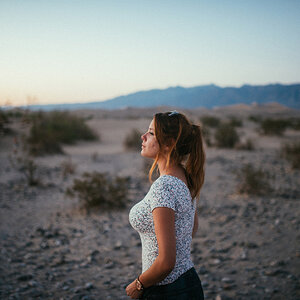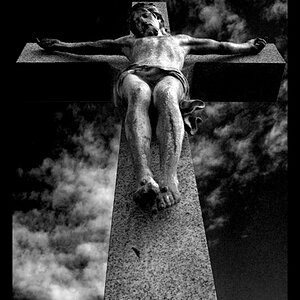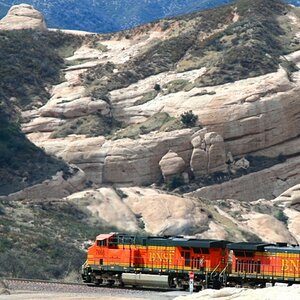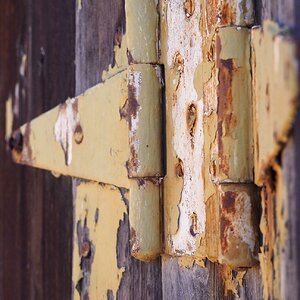NMLeakway
TPF Noob!
- Joined
- Aug 18, 2005
- Messages
- 335
- Reaction score
- 6
My friends and I are involved with a British reenactment squad, so we all went to the Reading Air Show this past weekend. Many reenactors come and camp out all weekend, and many aircraft also fly in. Here I'm just going to give some information on the firearms and the people I met, so if you are interested in this kind of stuff, give it a read. Some of these are reposts from a thread in the general gallery.
Here are some of the weapons that our unit uses.

1: No. 4 Mk. II SMLE (Short Magazine Lee Enfield): Standard infantry rifle used by the British/Commonwealth forces during WWII. This is my favorite rifle of the war. It has a 10 round clip and a shorter action than that of the German Mauser 98K. I know some people who can fire the Enfield as fast as someone can fire the American M1 Garand, which is semi-automatic.
2: SMLE Mk. III: An earlier version of the SMLE
3: An Enfield with a scope attached.
4: M1a1 Thompson Submachine Gun: This version of the Thompson was used later in the war, the Thompson sitting to the right of it is an earlier model (model 1928 which included a barrel cooling mechanism, a compensator on the muzzle, an adjustable rear sight, removable stock, and drum magazine compatability. It was simplified in order to speed up production during the war).
5: Bren Gun: A light machine gun used by the British and Commonwealth forces during the war. It was an extremely effective weapon. It was sturdy and had deadly accuracy. A huge advantage that the Bren had was its loaded from the top, so that whoever was firing the gun could keep it aimed on his target while another person reloaded it.
6: PIAT (Projector Infantry Anti-Tank): An anti-tank weapon. It is extremely heavy and must be used while prone or kneeling.
7: Mk. V Sten Submachine Gun: A later version of the Mk. II Sten Gun (below it). this was commonly issued to Paratroopers and featured a wooden grip and stock.
8: The Mills Bomb grenade.
9: Mk II Sten Gun: These were produced in extreme quantity during the war. Unlike the Thompson, it was very cheap to manufacture. It was often jested that the British were bringing in plumbers to build them.
We met this man in the Soviet section of the camp. He was wearing a Soviet Naval Infantryman (the equivalent of the Marines) uniform. It is one of the coolest, most intimidating uniforms I have ever seen. It is entirely black except for a red skull and crossbones on the left arm. The Soviet Naval infantrymen didnt like to carry their ammunition in pouches or packs, so they draped the belts across their chests. This had to make them extremely intimidating in battle. I believe his hat says "Baltic Fleet." We spoke to him for about 30 minutes about "Mother Russia's" involvement in the war. He was very knowledgeable and he spoke fluent Russian.
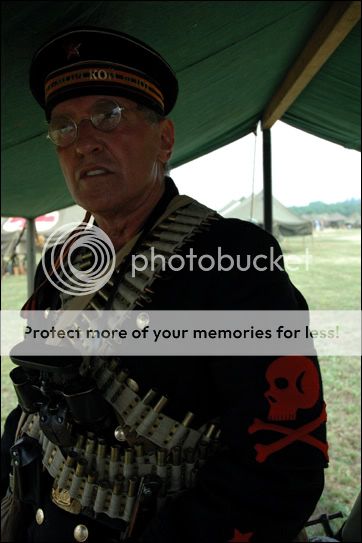
The cigarette he was smoking is typical of the kind that were issued to the Soviet soldiers during the war. The bottom half of the cigarette was cardboard, which was pinched to create a "filter." He recieved them from a friend he has in Russia who fought in the war. Upon recieving them he was told that during the war, most of the cigarettes were about 30 percent tobacco and 70 percent horse manure, but that he was lucky because these were horse manure free. Often the quality of the cigarette was determined by whether it was an officer's horse's manure.
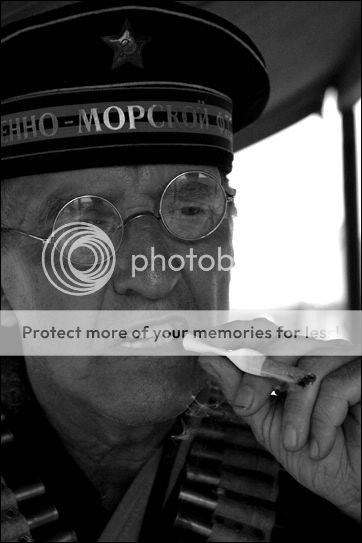
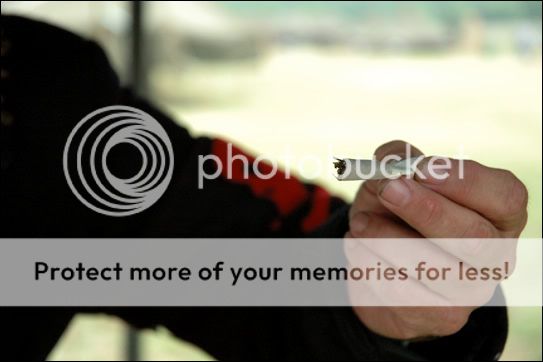
A Russian Uniform:
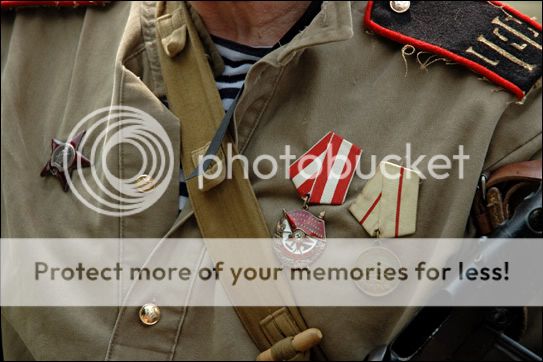
Camp of the Argyll And Sutherland Highlanders. These tents accomodate 15 men.
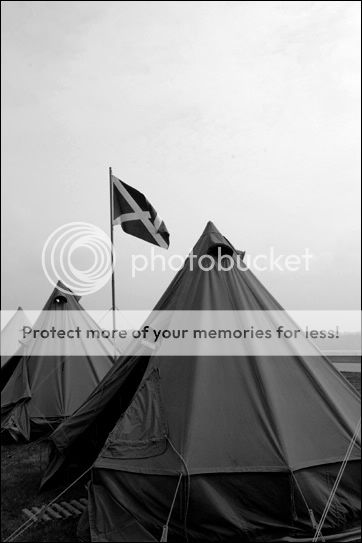
These guys were awesome. They were cooking haggis while me and my friends were talking with some of the guys. For those of you who dont know what Haggis is, it is a very simple Scottish dish. When people in Scotland killed a sheep for food, they had to use all of the sheep, they couldn't afford not to. So haggis was usually the heart, liver, etc which is mashed up, seasoned, and stuffed inside the stomach (which was cleaned out). It is actually good (in my opinion). The Scots love their Haggis so much that they write songs about it. Their piper took out his pipe and they proceeded to march around playing the "Ode to the Haggis."

Afterwards, the piper recited a poem about the Haggis and recieved his payment (a shot of whiskey). Then the stomach was cut and the Haggis was shared among the people.
The following is a photograph of Jack Lucas, USMC. Yes, that is the Medal of Honor around his neck. He was the youngest recipient of the award during the war, and I think he remains the youngest to this day.
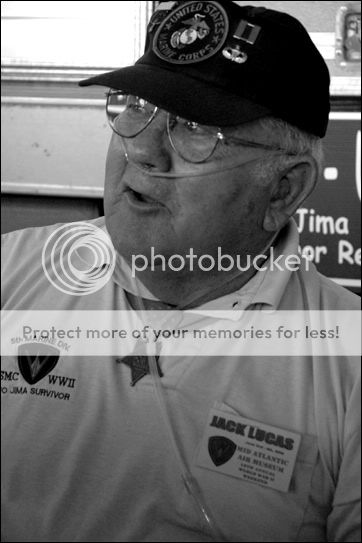
This man was sporting his very decorated uniform.

This is a picture of a friend of mine with a veteran of the Luftwaffe (the German air force). This man was shot down and taken prisoner by the Russians during the war, he survived over a year of captivity.
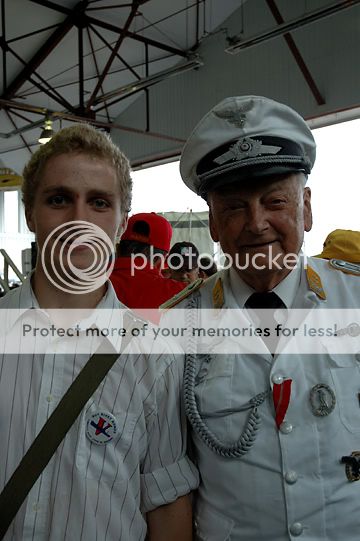
The back of a C-47 (Thanks Airic)
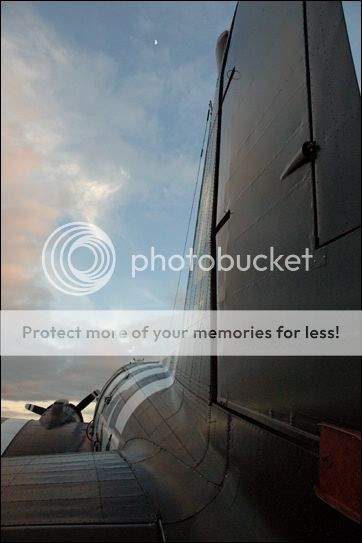
It was a great weekend.
Thanks to anyone who actually took the time to read all of this!
Here are some of the weapons that our unit uses.

1: No. 4 Mk. II SMLE (Short Magazine Lee Enfield): Standard infantry rifle used by the British/Commonwealth forces during WWII. This is my favorite rifle of the war. It has a 10 round clip and a shorter action than that of the German Mauser 98K. I know some people who can fire the Enfield as fast as someone can fire the American M1 Garand, which is semi-automatic.
2: SMLE Mk. III: An earlier version of the SMLE
3: An Enfield with a scope attached.
4: M1a1 Thompson Submachine Gun: This version of the Thompson was used later in the war, the Thompson sitting to the right of it is an earlier model (model 1928 which included a barrel cooling mechanism, a compensator on the muzzle, an adjustable rear sight, removable stock, and drum magazine compatability. It was simplified in order to speed up production during the war).
5: Bren Gun: A light machine gun used by the British and Commonwealth forces during the war. It was an extremely effective weapon. It was sturdy and had deadly accuracy. A huge advantage that the Bren had was its loaded from the top, so that whoever was firing the gun could keep it aimed on his target while another person reloaded it.
6: PIAT (Projector Infantry Anti-Tank): An anti-tank weapon. It is extremely heavy and must be used while prone or kneeling.
7: Mk. V Sten Submachine Gun: A later version of the Mk. II Sten Gun (below it). this was commonly issued to Paratroopers and featured a wooden grip and stock.
8: The Mills Bomb grenade.
9: Mk II Sten Gun: These were produced in extreme quantity during the war. Unlike the Thompson, it was very cheap to manufacture. It was often jested that the British were bringing in plumbers to build them.
We met this man in the Soviet section of the camp. He was wearing a Soviet Naval Infantryman (the equivalent of the Marines) uniform. It is one of the coolest, most intimidating uniforms I have ever seen. It is entirely black except for a red skull and crossbones on the left arm. The Soviet Naval infantrymen didnt like to carry their ammunition in pouches or packs, so they draped the belts across their chests. This had to make them extremely intimidating in battle. I believe his hat says "Baltic Fleet." We spoke to him for about 30 minutes about "Mother Russia's" involvement in the war. He was very knowledgeable and he spoke fluent Russian.

The cigarette he was smoking is typical of the kind that were issued to the Soviet soldiers during the war. The bottom half of the cigarette was cardboard, which was pinched to create a "filter." He recieved them from a friend he has in Russia who fought in the war. Upon recieving them he was told that during the war, most of the cigarettes were about 30 percent tobacco and 70 percent horse manure, but that he was lucky because these were horse manure free. Often the quality of the cigarette was determined by whether it was an officer's horse's manure.


A Russian Uniform:

Camp of the Argyll And Sutherland Highlanders. These tents accomodate 15 men.

These guys were awesome. They were cooking haggis while me and my friends were talking with some of the guys. For those of you who dont know what Haggis is, it is a very simple Scottish dish. When people in Scotland killed a sheep for food, they had to use all of the sheep, they couldn't afford not to. So haggis was usually the heart, liver, etc which is mashed up, seasoned, and stuffed inside the stomach (which was cleaned out). It is actually good (in my opinion). The Scots love their Haggis so much that they write songs about it. Their piper took out his pipe and they proceeded to march around playing the "Ode to the Haggis."

Afterwards, the piper recited a poem about the Haggis and recieved his payment (a shot of whiskey). Then the stomach was cut and the Haggis was shared among the people.
The following is a photograph of Jack Lucas, USMC. Yes, that is the Medal of Honor around his neck. He was the youngest recipient of the award during the war, and I think he remains the youngest to this day.

This man was sporting his very decorated uniform.

This is a picture of a friend of mine with a veteran of the Luftwaffe (the German air force). This man was shot down and taken prisoner by the Russians during the war, he survived over a year of captivity.

The back of a C-47 (Thanks Airic)

It was a great weekend.
Thanks to anyone who actually took the time to read all of this!


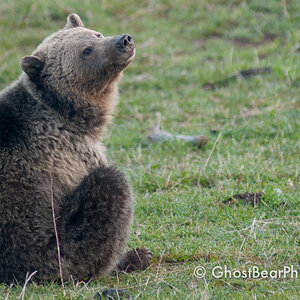
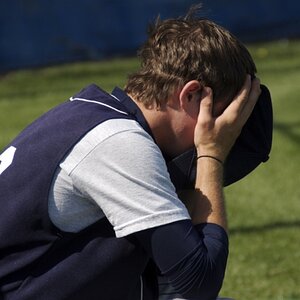
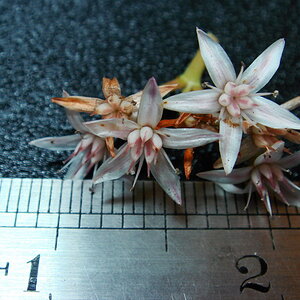
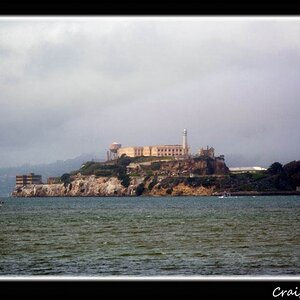

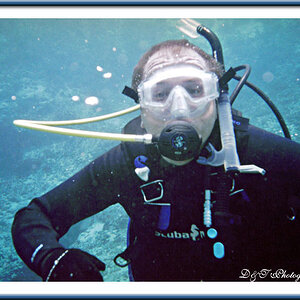
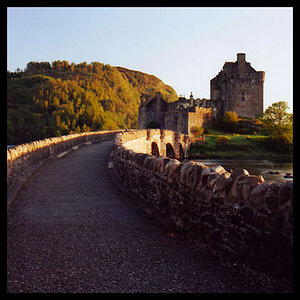
![[No title]](/data/xfmg/thumbnail/42/42017-05f80a89ca2890969b5dc7cc47872581.jpg?1619739979)
